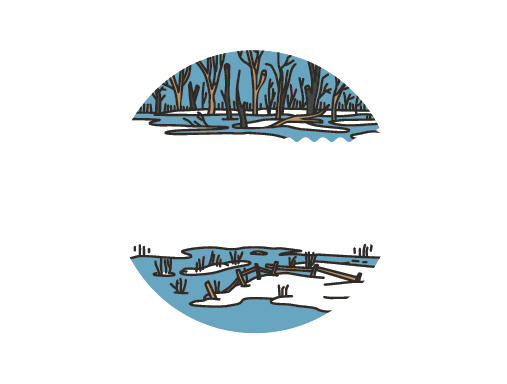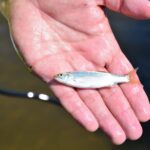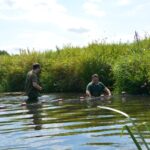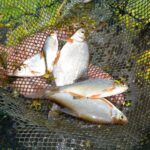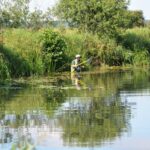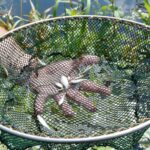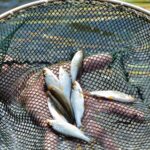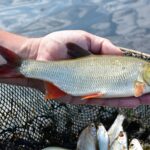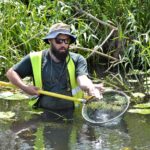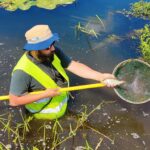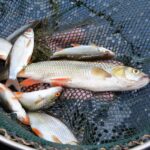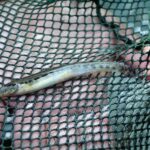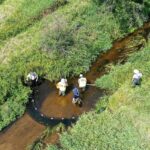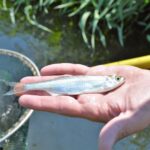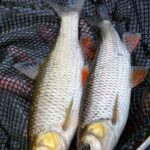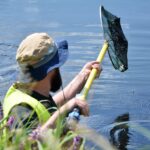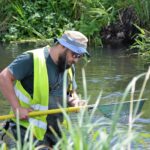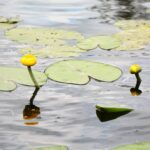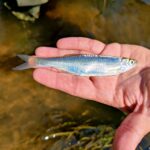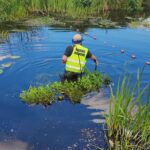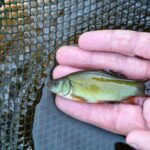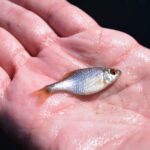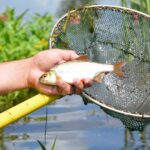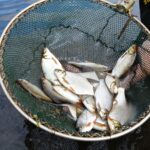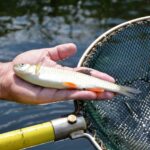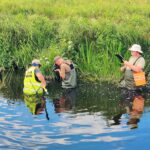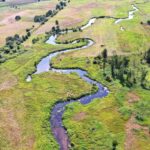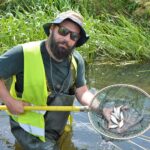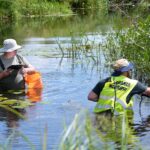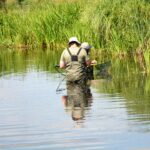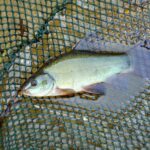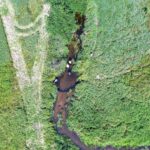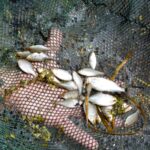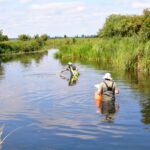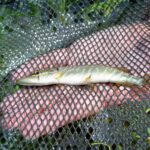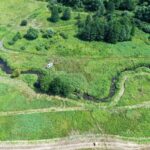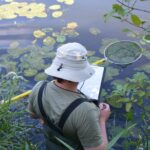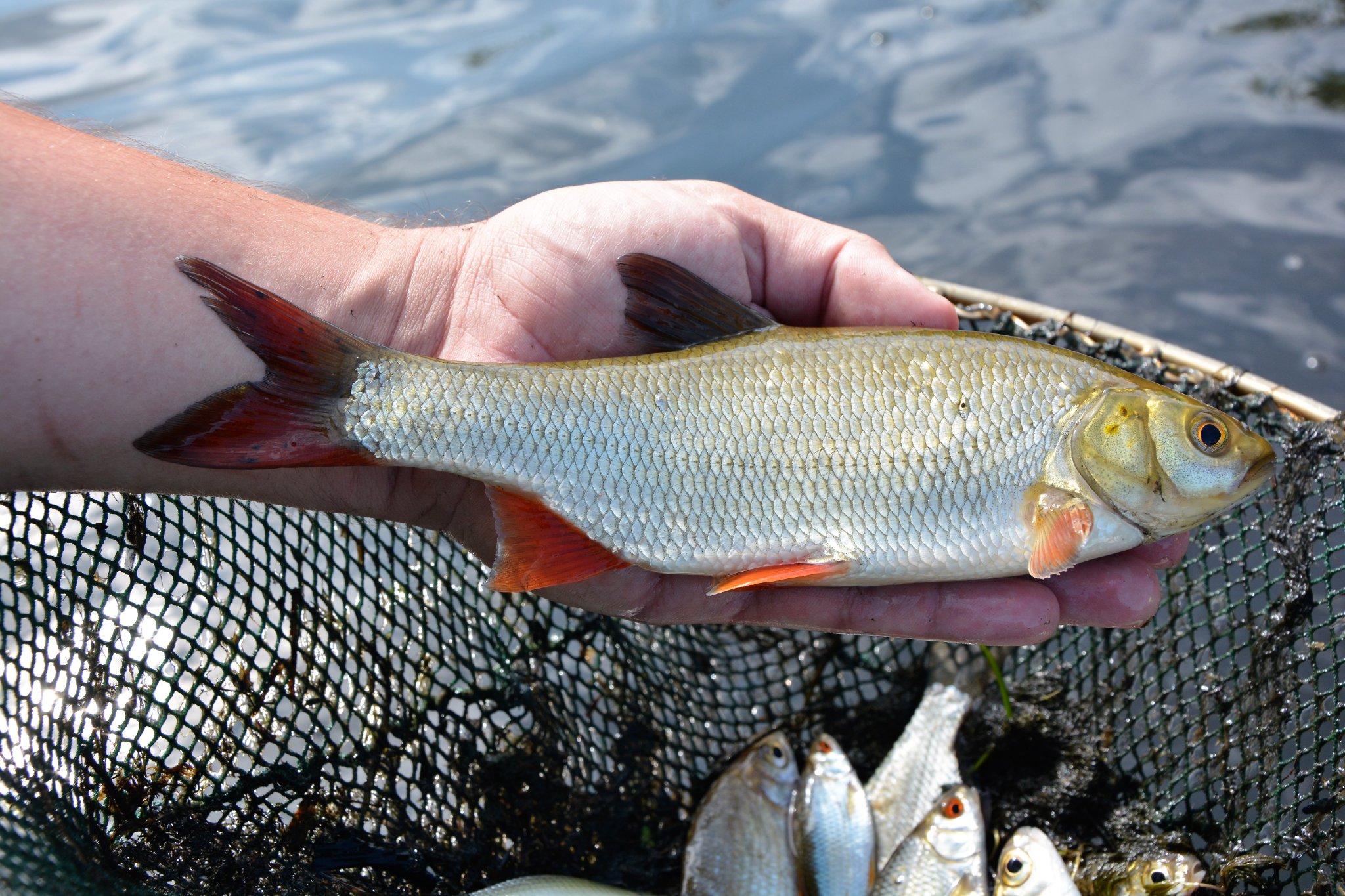
17 Aug We monitor fish in the inland delta of the Nida River
The Nida delta is not the only thing the delta stands for – the vast, wet floodplain known as the inland Nida delta also carries the waters of other watercourses flowing into the Nida River, such as the Umianowicka Smuga (also known as Struga Umianowicka). The Umianowicka Struga is an important element supporting the biodiversity of the delta, so special attention has been paid to restoring the hydrological continuity of this watercourse, which in previous years, as a result of intensive agricultural drainage of the area, formed only a string of small, drying reservoirs in places. Now, as a result of activities carried out under the Life4Delta project, the Umianowicka Struga is once again forming a watercourse that supports the occurrence of many diverse habitat forms and assemblages of organisms.
As we have done every year since the completion of the hydrotechnical works, with the help of an ichthyologist specialist from the Institute of Nature Protection of the Polish Academy of Sciences, we examined the occurrence of fish assemblages living in the Umianowicka River. The surveys were designed to learn about the species composition and densities of fish individuals along the various sections of the watercourse, which may allow an assessment of the extent to which reclaimed habitats are being recolonized and used by fish. We are very surprised and pleased by the results!
This time, a total of as many as 16 species of fish belonging to the native ichthyofauna and four species of fish classified as invasive alien species were detected. In the observation of invasive species, it is very encouraging to see many times fewer brown bullhead (Ameiurus nebulosus) compared to previous surveys. The native species that completely dominated the catch and occurred at all surveyed sites was roach (Rutilus rutilus). A high proportion of the catch was made up of typically riverine, rheophilous fish species, such as gudgeon (Gobio gobio), chub (Squalius cephalus), ide (Leuciscus idus), dace (Leuciscus leuciscus) and asp (Aspius aspius). Demonstrating the clear diversity of the restored habitats, species associated mainly with oxbow lakes and stagnant waters, such as tench (Tinca tinca), rudd (Scardinius erythrophthalamus), and sunfish (Leucaspius delineatus), also had their representation. The most abundant ichthyophagous predator was pike (Esox Lucius), which population was characterized by a very high proportion of juveniles from different breeding seasons. The largest fish observed was an asp measuring approx. 60cm. The presence of protected fish species and those specifically highlighted in the appendices of the so-called “Protected Fish” is very gratifying. Habitats Directive: weatherfish (Misgurnus fossilis), spined loach (Cobitis taenia) and European bitterling (Rhodeus amarus). The latter species has experienced a veritable resurgence in the studied watercourse – in the previous year a total of several dozen individuals were found throughout the study area, and now a maximum density of even more than three hundred individuals per square meter was observed!
Difficult research terrain and hard, patient work have been rewarded with the sight of many handsome fish, which is especially gratifying, bearing in mind that not long ago the bed of the Umianowicka Smuga carried no water at all in many places. We invite you to see a photo report by R. Pisarczyk from the Complex of Swietokrzyskie and Nadnidziański Landscape Parks.
Text: Jacek Dolęga

